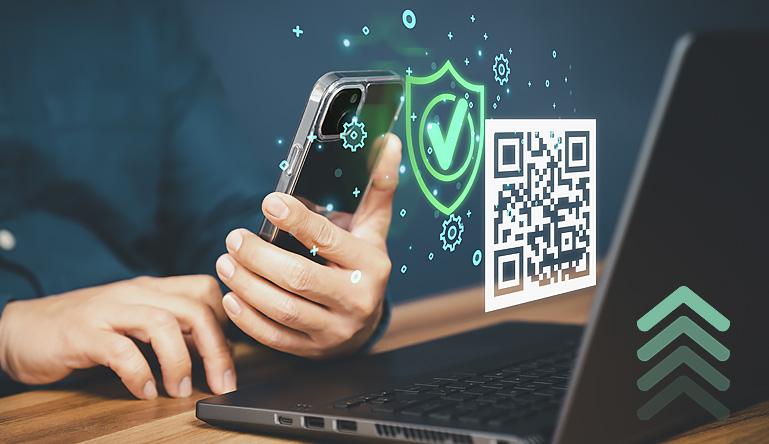-
 Senior Solutions Engineer, Catalis Payments
Senior Solutions Engineer, Catalis PaymentsAn expert in government payment solutions specializing in client success, strategic delivery, and innovative, results-driven technologies.
View all posts
QR Code Payments Are a Smart Move for Government Agencies
In a world where people expect quick, touch-free transactions, QR code payments have become a go-to method for everything from coffee purchases to transit tickets. But this technology isn’t just for retailers—government agencies are increasingly discovering how QR code payments can simplify operations, reduce costs, and enhance the citizen experience.
Fast, secure, and affordable to implement, QR code payments offer a low-barrier way to modernize government services without requiring major infrastructure changes. And best of all—they meet citizens where they already are, using smartphones for everyday tasks.
What Are QR Code Payments?
A QR code (short for Quick Response code) is a type of barcode that stores data like payment information, URLs, or account identifiers. With a single scan, users can initiate a financial transaction without needing cash, physical cards, or even typing in account numbers.
Here’s how it typically works:
- A government agency generates a QR code for a specific payment—whether it’s for taxes, permits, utilities, or court fees.
- The citizen scans the code using a smartphone camera or their digital wallet app.
- Payment details (amount, recipient info, reference number) are pre-filled.
- The citizen confirms the transaction through their preferred payment method (credit card, debit card, bank transfer, or digital wallet).
It’s fast, contactless, and user-friendly. The whole process takes just seconds, and the system doesn’t require expensive hardware or deep integrations to get started.
Why QR Code Payments Make Sense for Government
Easy for Citizens to Use
Most people already know how to scan a QR code—from scanning menus to making P2P payments. This widespread familiarity means little to no learning curve for the public. All that’s required is a smartphone, which the vast majority of U.S. adults already carry.
For citizens, QR code payments:
- Remove the need to carry cash or cards
- Eliminate long lines at payment counters
- Allow payments to be made from home, work, or on the go
- Provide immediate confirmation of payment
Whether displayed at a kiosk, printed on a utility bill, or embedded in an email or text, QR codes create a frictionless experience for all users.
Low-Cost Implementation for Agencies
Unlike traditional POS systems, QR codes don’t require specialized terminals or third-party hardware. In fact, many QR code payment platforms can be implemented with minimal setup and maintenance costs, making them an attractive option for budget-conscious public agencies.
Governments can generate unique QR codes for:
- Individual bills or invoices
- Bulk mailings (like tax notices or citation letters)
- On-site signage at offices, courthouses, or public events
- Email and text message reminders
This flexibility makes QR codes one of the most cost-effective digital payment tools available today.
Improved Service Delivery and Operational Efficiency
Allowing citizens to pay through QR codes reduces foot traffic in government buildings, shortens service queues, and lowers the volume of phone inquiries. Payments are processed instantly, and digital receipts can be issued automatically.
For staff, this means:
- Less time spent handling paper payments
- Fewer manual data entry tasks
- Real-time updates to billing and case management systems
- Lower risk of errors or payment disputes
The result? Faster service, fewer delays, and more satisfied constituents.
Enhanced Security and Transparency
QR code payments are inherently secure when paired with encrypted payment platforms. Citizens aren’t entering sensitive information into public portals or passing cards across counters. Instead, they’re directed to a secure, mobile-optimized interface hosted by a PCI-compliant provider.
Plus, every transaction leaves a digital trail—which improves accountability, simplifies reconciliation, and supports better audit readiness.
Greater Accessibility and Inclusivity
One of the most powerful aspects of QR code payments is that they’re accessible to a wide range of people—including those without access to traditional banking services. Users can connect their QR-enabled payment method to prepaid cards, mobile money apps, or digital wallets, making this technology more inclusive than many standard payment models.
This is particularly important for reaching underserved communities, residents in rural areas, and individuals who may not be comfortable with complex online portals.
Touch-Free for Health and Safety
Contactless payments became mainstream during the pandemic—and they’re here to stay. QR code payments allow for safe, touch-free transactions in public spaces, helping reduce the spread of germs while streamlining the checkout process.
For public agencies focused on both safety and efficiency, QR codes deliver a simple way to reduce physical contact without sacrificing functionality.
Where Government Agencies Can Use QR Code Payments
QR codes can enhance the payment experience across nearly every public-facing department. Here are just a few real-world applications:
- Courts: Allow defendants to pay fines by scanning a QR code printed on a citation or court notice.
- Tax offices: Add QR codes to mailed tax statements so residents can pay online instantly.
- Utilities: Place QR codes on water or electric bills for fast, mobile payment.
- Parks and recreation: Enable QR payments for facility rentals, classes, or event tickets.
- Public works: Let residents pay for permits or service fees on-site with a quick scan.
- Transit agencies: Use QR codes for fare payments or citation resolution.
If your agency collects payments from the public, chances are there’s a place where QR codes can make the process easier and more efficient.
Turning Simplicity Into Service with Catalis
Bringing QR code payments into your agency’s workflow doesn’t have to be complex. The key is choosing a partner that understands the unique needs of public entities—and can help you roll out secure, user-friendly solutions that scale.
That’s where Catalis comes in.
Catalis Payments empowers government agencies to implement QR code payments as part of a broader, flexible payment strategy. With built-in integration, real-time reconciliation, and mobile-first design, Catalis makes it easy to offer citizens a fast, secure, and seamless way to pay—whether online, by mail, or in person.
Because meeting citizens where they are shouldn’t be complicated. Sometimes, it’s as simple as a scan.
Visit Catalis for a comprehensive list of our government/public sector solutions.


